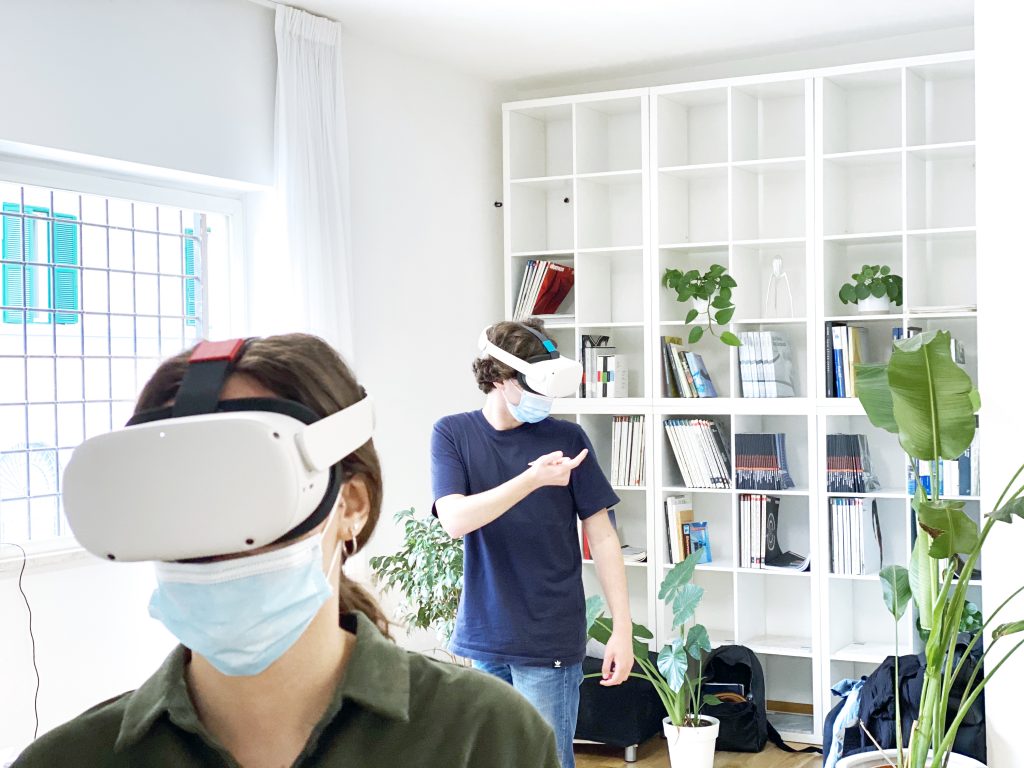One leg of our tour took us to the MAD Architects Rome office.
We were welcomed by Andrea D’Antrassi, the Associate Partner of the firm, who asked if we could show Osaka’70 to the whole team. This allaowed us to use the multi-user mode for the first time, and bring more than one person in addition to the guide.
In fact, at each stop, John Volpato or Valentina Temporin accompanied the visitor through Sacripanti’s pavilion just like a real guided tour.
This feature allows us to move from a solitary to a social experience. It is also useful to explain the peculiarities of architecture inside the virtual space, in a direct interaction with the other participants.

The dialogue with Andrea D’Antrassi was begun from the ability to establish direct relationships in the virtual environment.
In fact, we talk about the possibility of using this function in a fruitful way, to explain architectural projects to clients.
It would be possible to visit a project in development together with the client, changing the elements of the space in front of their eyes.
That’s not all: you could explain the project by standing inside it, and this would help people to understand the designer’s idea more deeply.
The virtual building maquette could replace the meeting room, where today an idea is explained with renderings, technical drawings and physical models.
In this case, it would be necessary to understand the minimum level of the project’s features before showing it to the client.
Certainly, we need a visualization that allows the viewer to have a clear idea of the volumes, but also of the details and materials.
At the same time, it is necessary to leave some degrees of freedom, allowing the client to change some parameters together with the designer.
John Volpato guiding MAD Architects’ team inside Osaka ’70 – MAD Architects, Rome
Could this represent a new form of participatory planning?
This approach to design has clear rules and, even in the virtual environment, it will be necessary to develop a reasoned visualization system in order to obtain a correct balance between the architect’s requests and the user’s needs.
If you want to know more about what we do or to visit the pavilion write us at: info@poplab-team.org